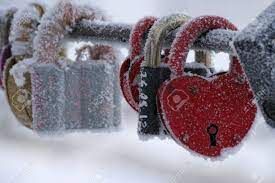10 Common Door Lock Problems and Solutions Tips and Tricks
Doors and locks are an essential part of any building’s security system. They keep your home or office safe from unwanted guests and protect your belongings from theft. However, door locks can sometimes fail to function correctly, leaving you with security issues. In this blog post, we will discuss ten common door lock problems and their solutions.
Stiff Locks –
A stiff lock is a common issue that can be caused by a buildup of dirt or debris.
Our solution is to clean the lock with a lubricant such as graphite powder or wd-40, which will help the lock slide more smoothly.
Misaligned Strike Plate –
If your lock is not functioning correctly, the strike plate may be misaligned. This is because the plate can become loose over time, causing the latch to miss the hole.
A cool solution is to try lines up or cut the plate and reposition it, so it lines up with the hole.
Jammed Lock –
A jammed lock can be caused by a broken key, foreign objects in the lock, or a misaligned strike plate. To fix this, try to remove any foreign objects, use graphite powder to lubricate the lock, or call a locksmith if the key is broken inside.
Deadbolt Doesn’t Turn –
If your deadbolt doesn’t turn, it could be due to a worn-out cylinder or latch try to use wd-40. If you are not sure if it works, please call the locksmith to get the best solution for your lock. You may need to replace or repair your deadbolt to solve this problem.
Worn-Out Key –
A worn-out key can cause the lock to become stuck or jammed. You may need to get a new key cut or replace the lock entirely.
Loose Lock –
If your lock is loose, it could be due to loose screws or a damaged strike plate. Tighten the screws or replace the strike plate to solve this problem.
Frozen Lock –
A frozen lock can occur during the winter months when temperatures drop. You can use a hairdryer to thaw the lock or apply a de-icing solution to solve this problem.

Old Lock –
Old locks can become less effective over time, making them easier to pick or break. to get the opinion call the locksmith, You may need to replace your lock with a newer one, or to get new parts for your lock.
Faulty Electronic Locks –
Electronic locks can sometimes fail to function correctly due to low battery life or faulty wiring. Check the batteries and wiring to solve this problem.
Key Won’t Turn –
If your key won’t turn and the lock got stuck, it could be due to a misaligned latch or a worn-out key. Try jiggling the key or try to use wd-40 to lubricate the lock.
10 solutions or tips and tricks to help you keep your lock functioning correctly and enhance the security of your property:
Keep Your Locks Lubricated
Keeping your locks lubricated regularly can help to prevent door lock problems. use wd-40 to keep the lock functioning smoothly. wd-40 oil
the locks can also help to extend the life of the lock
Upgrade Your Locks
If you have an old lock, consider upgrading to a smart lock or high security lock. Install a deadbolt or a smart lock to enhance the security of your property. Smart locks allow you to control and monitor access to your property remotely.
Maintain Your Locks Regularly
Regular maintenance of your locks can help to prevent door lock problems. Use a soft-bristled brush to clean the lock and keyhole regularly. You can also use a can of compressed air spray to blow out any dust that might be stuck in the lock
Avoid Forcing Your Key
Avoid forcing your key into the lock as it can cause damage to the lock. If the key does not turn easily, apply a lubricant and try again. If it still does not work, consider calling a professional locksmith.
Keep Your Keys Safe in your pocket
Keeping your keys safe near you is crucial to maintaining the security of your property. Don’t leave your keys lying around in your office or public space like a bar or restaurant , also don’t give them to anyone you don’t trust 100% who should not have access to your property. Consider using a key safe or a keyless entry system to enhance the security of your keys.
Check the Screws Regularly
Check the screws on your locks regularly to ensure they are not loose. Loose screws can cause the lock to malfunction, making it easier for someone to break in. Tighten the screws as necessary.
Avoid Using Excessive Force
Avoid using excessive force when locking or unlocking your door. This can cause damage to the lock, Turn the key gently and avoid slamming the door.
Install Security Cameras
Installing security cameras can help to deter burglars and enhance the security of your property. Place cameras near your doors to monitor any suspicious activity.
Install Window Bars
If you have windows near your doors, consider installing window bars to prevent burglars from gaining access through the windows. Window bars can help to enhance the security of your property.
Call a Professional Locksmith
If you have any door lock problems that you cannot fix, do not hesitate to call a professional locksmith. They have the expertise and tools necessary to diagnose and fix any lock issue quickly and efficiently
In conclusion, keeping your locks functioning correctly and enhancing the security of your property requires regular maintenance and attention. try to use those tips and tricks, you can help to prevent your door lock problems and keep your property safe and secure.
Call Us Any Time!








